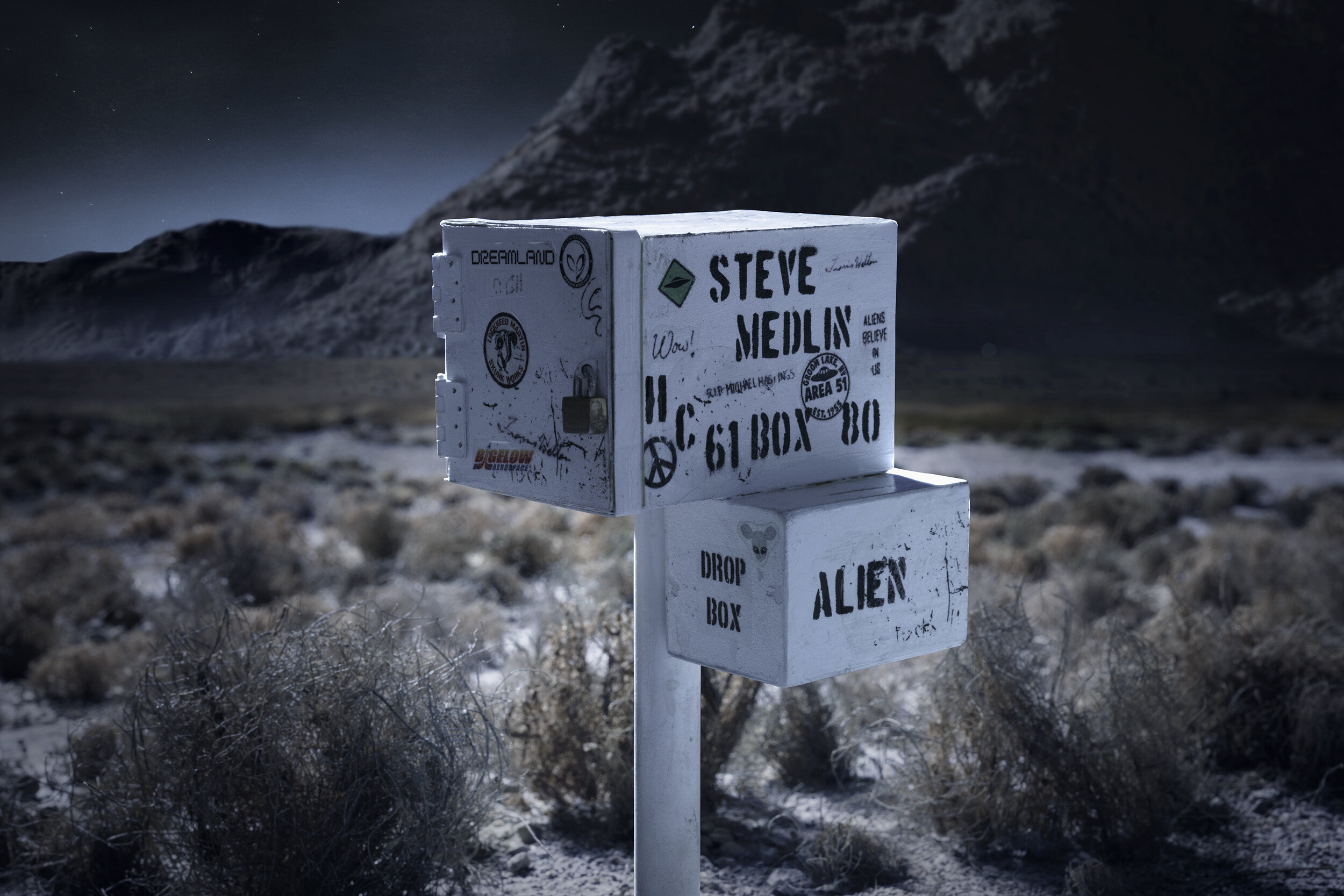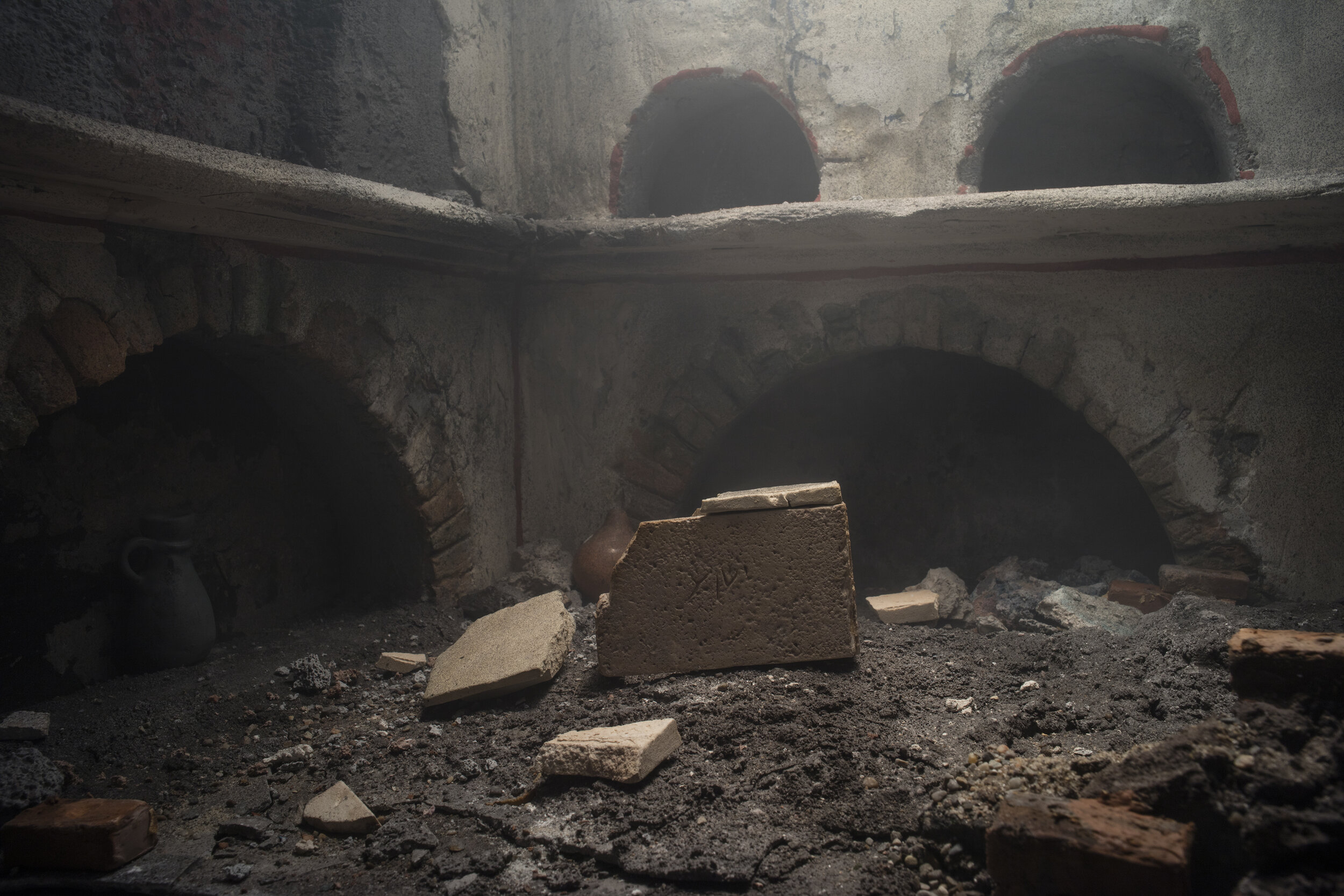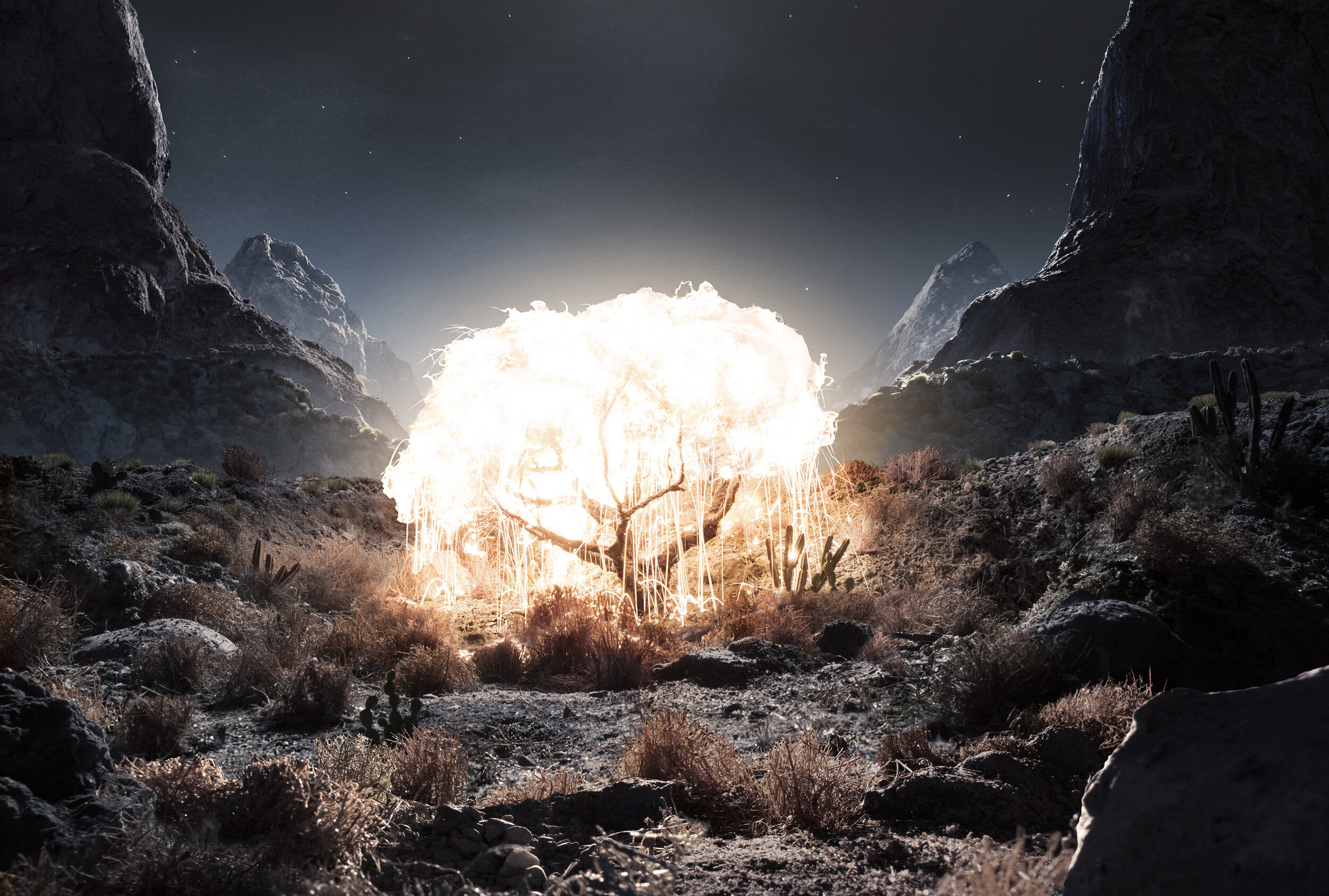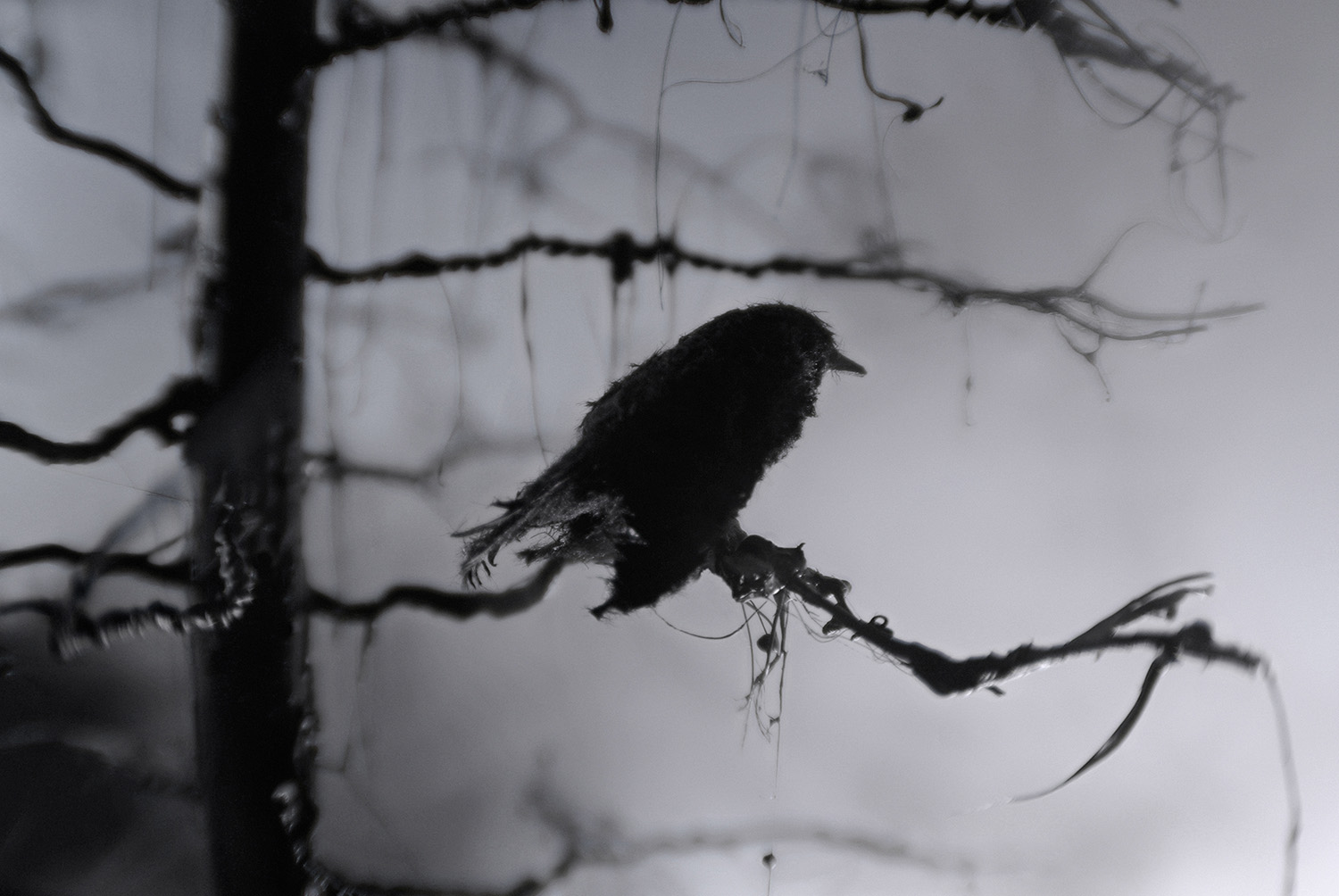Miniature Photography
Miniature based photography









![NSA Server Room [alt]](https://images.squarespace-cdn.com/content/v1/56da553445bf214a0b33e35e/1633313600977-N4FAXOWN1KJ26PTEVUK0/image-asset.jpeg)




































Part of a series I collaborated on with the Keck Observatory in Hawaii in 2018.
Gliese 876b is a gas giant that’s two times more massive than Jupiter, as seen from a hypothetical moon. Gliese 876b is located in an extrasolar system that is just 15 light years away.
The surface temperatures are estimated to be 3,000 to 4,000 degrees Fahrenheit. EPIC 220674823 b’s extreme environment is due to its searing proximity to its star, EPIC 220674823; the planet is 35 times closer to its star than Mercury is to the Sun. EPIC 220674823 b is a super-Earth; it has a radius that is 46% larger and is between 2.4 to 4.5 times more massive than our planet. It is an Ultra-Short-Period (USP) planet, which is a class of exoplanets that orbit their stars in less than one Earth day. One year on EPIC 220674823b lasts only 13 hours. The discovery of EPIC 220674823 b was announced in 2017 using data from NASA’s Kepler Space Telescope K2 mission. Keck Observatory’s NIRC2 instrument using Adaptive Optics (AO) was key to determining that EPIC 220674823 b’s star is single, not a binary. This observation was critical in calculating the planet’s radius. The EPIC 220674823 system is located 825 light-years away from Earth. CREDITS: Exoplanet Art by Adam Makarenko; Scientific Advice by @keckobservatory Astronomer Carlos Alvarez
From the series Exoplanets
from the series 'Probes'
Miniature from the series 'Probes'
Materials: Clouds (cotton, polyester), landscape (clay, plaster, plastic, and foam)
From the series called ‘Probes’
Part of a collaborative project with the Keck Observatory in Hawaii
Part of a project funded by the Ontario Arts Council called ‘Forbidden Places’
Influenced by room 641A - a telecommunication interception facility operated by AT&T for the U.S. National Security Agency, as part of its warrantless surveillance program as authorized by the Patriot Act. The facility commenced operations in 2003 and its purpose was publicly revealed in 2006.
Part of a project funded by the Ontario Arts Council called ‘Forbidden Places’
The box is located just outside of Rachel, NV and less than 30 miles from Groom Lake (Area 51). The ‘black’ mailbox is one of the most famous landmarks in the area. A former Groom Lake employee named Bob Lazar would bring people there to show them scheduled UFO launches in the mid-1990s. Because of this, the mailbox became a highly popular spot for UFO watchers and information seekers.
Part of a project funded by the Ontario Arts Council called ‘Forbidden Places’
The box is located just outside Rachel, NV and less than 30 miles from Groom Lake (Area 51). The ‘black’ mailbox is one of the most famous landmarks in the area. A former Groom Lake employee, Bob Lazar, would bring people there to show them upcoming UFO launches in the mid-1990s. Because of this, the mailbox became a highly popular spot for UFO watchers and information seekers. As a result of its popularity, the mailbox suffered damages, and mail theft.. Covered in human marks, it becomes a modern-day totem — a place of pilgrimage, graffiti, and absurdity. It went through a few reincarnations, changing from black to white. Today, there is no longer any mailbox, but in its place, there have been several incarnations of makeshift memorials.
From the series ‘Forbidden Places’, a project funded by the Ontario Arts Council
Flash forward past the time frame of the black mailbox to 2016-
From the series Apparatus Paradoxicus
he Orgone Accumulator is a pseudo-scientific device created by Wilhelm Reich (an Austrian doctor of medicine ) who lived in New York State during the 1940’s.
Reich claimed that he discovered a cosmic energy called ‘orgone energy’ or ‘orgone radiation’. Orgone was said to be a massless, omnipresent substance, similar to luminiferous aether, but more closely associated with living energy than with inert matter.
Reich wrote to his supporters in July 1941 that orgone is “definitely able to destroy cancerous growth. This is proved by the fact that tumors in all parts of the body are disappearing or diminishing. No other remedy in the world can claim such a thing.”
This telephone-booth-size device supposedly gathered energy from the atmosphere, while the patient sat inside. It cured common colds, cancer, and impotence. The accumulator was about as scientific and new age crystal healing, and it wasn’t long before this invention got him into a lot of trouble with the authorities.
On June 5, 1956, two FDA officials arrived at Orgonon (his institute) to supervise the destruction of all accumulators. Then shortly after, on June 26, more agents returned to supervise the destruction of promotional material, including 251 copies of Reich’s books. By August 23, six tons of Reich’s books, journals and papers were burned in New York, at the Gansevoort incinerator.
After a lengthy legal battle, Wilhelm Reich was found guilty of contempt of court for violating a court-issued injunction against the distribution of his orgone energy devices and literature. He was sentenced to two years in federal penitentiary and died in prison in 1957.
From the series Apparatus Paradoxicus
This is my miniature version of THE GOD HELMET. In 2013, I had the opportunity to interview Professor Michael A. Persinger (Ph.D., C.Psych.) from Laurentian University for a documentary. I heard about his work through a childhood friend (Charles Cook) @dumpjack, who was his student in the 1990s. In fact, if it weren’t for knowing Charles, I would not have gotten the interview.
In the mid- to late 1990s, it was the peak time of X-Files, alien abduction stories, ghosts, and everything Fortean in nature—and at Laurentian, they studied these aspects with actual scientific experiments. To me, this was wild, and it totally intrigued me. Usually, science is very conservative, but this was ‘fringe’ science that explored the limits of the human brain. The God helmet was featured on several TV shows like Unsolved Mysteries, Nova, and Horizon.
Stanley Koren and neuroscientist Michael Persinger created the helmet, an experimental apparatus that worked by introducing a complex patterned pulsed magnetic signal (extremely low-frequency and low-intensity magnetic field) to the head of the person who wore it. Its purpose was to study creativity and religious experience by subtly stimulating the temporal lobes, as one of Persinger's most famous hypotheses suggested that mystical experiences were associated with the temporal lobes of the human brain. Some participants wearing the God helmet occasionally reported a sensed presence.
From the series Apparatus Paradoxicus
The world's first nuclear device (a plutonium bomb) was detonated on July 16, 1945, at 5:29 AM on top of a 30-metre tower. The test site was 210 miles south of Los Alamos, New Mexico, on the plains of the Alamogordo Bombing Range. The code name for the test was "Trinity."
At the time of detonation, the surrounding mountains were illuminated "brighter than daytime" for two seconds, and the heat was reported as "being as hot as an oven" at the base camp.
"We knew the world would not be the same. A few people laughed, a few people cried. Most people were silent. I remembered the line from the Hindu scripture, the Bhagavad Gita; Vishnu is trying to persuade the Prince that he should do his duty and, to impress him, takes on his multi-armed form and says, 'Now I am become Death, the destroyer of worlds.' I suppose we all thought that, one way or another."
-Robert Oppenheimer
Part of a project funded by the Ontario Arts Council called ‘Forbidden Places’
Project Bluebook was the code name for the systematic study of unidentified flying objects by the United States Air Force from March 1952 to its termination on December 17, 1969
Part of a project funded by the Ontario Arts Council called ‘Forbidden Places’
What is below the Vatican? I can imagine a long narrow staircase that leads into some unknown area.
Part of a project funded by the Ontario Arts Council called ‘Forbidden Places’
Part of a project funded by the Ontario Arts Council called ‘Forbidden Places’
Part of a project funded by the Ontario Arts Council called ‘Forbidden Places’
Part of a project funded by the Ontario Arts Council called ‘Forbidden Places’
These are the tablets that were inside of the Ark, now discarded in this photograph. The text is written in Paleo Hebrew as it would have been written over 2000 years ago…
Part of a project funded by the Ontario Arts Council called ‘Forbidden Places’
This version of the Ark has been looted, and stripped of its worldly value…
No one is sure where the Ark is located - Some say Ethiopia, while others believe it’s under the Temple Mount.
Part of a project funded by the Ontario Arts Council called ‘Forbidden Places’
I wanted the model to look like it has been photographed in a museum — set up very staged against a solid black backdrop.
From the series Forbidden Places
Part of a project funded by the Ontario Arts Council called ‘Forbidden Places’
Some of the earliest stories of civilization contain the forbidden fruit: bright and beckoning, promising sweetness but also transgression and danger. As human beings, we’re intrigued by what we’re not supposed to see or touch, whether it’s a place, a physical object, or knowledge meant for a selected few. There has always been a demarcation between what we know and what we don’t know; what we can have, and what we can’t have. Every civilization throughout history has harbored its own version of what’s forbidden.
from the series 'Miniature Bees & Apiaries'
from the series 'Miniature Bees & Apiaries'
from the series 'Miniature Bees & Apiaries'
from the series ‘Miniature Bees & Apiaries’
“…To guide him in his picture-making, Makarenko worked up a narrative about a Scandinavian man who discovers (Langstroth Valley) in 1925 and harvests a bees' unusual honey. He calls the project two names: the Miniature Apiary series, and The Langstroth Range series, after L.L. Langstroth, a 19th-century man who invented the modern removable beehive….” —Globe and Mail (2008)
This is a one-off model experiment. The wave was sculpted with clay, and then moulded with two part tinted plastic.
from the series 'Green Refuges'
from the series 'Green Refuges'
from the series 'Northwestern Ontario'
from the series 'Northwestern Ontario'
I would like to revisit this idea again in the future
from the series called “Northwestern Ontario’
from the series ‘Northwestern Ontario’
from the series 'Northwestern Ontario'
This is a wintery miniature road shot through a miniature car windshield. The wolf was shot separately, and composited into the scene.
from the series ‘Northwestern Ontario’
from the series called ‘Northwestern Ontario’
from the series 'Northwestern Ontario'
from the series 'Northwestern Ontario'
Miniature based photography